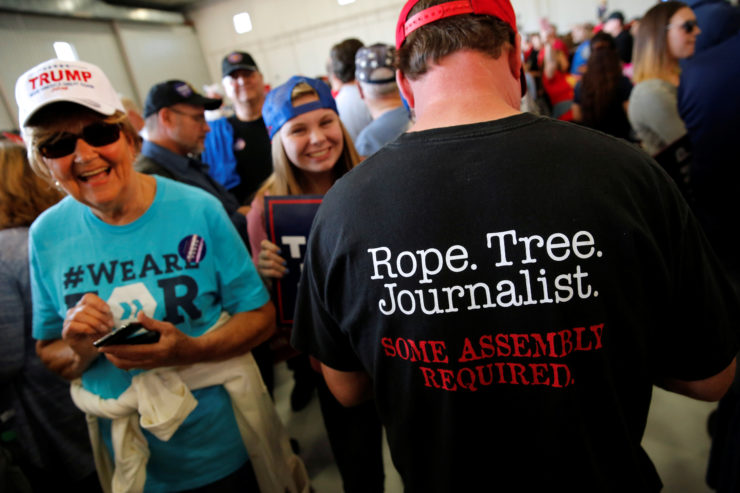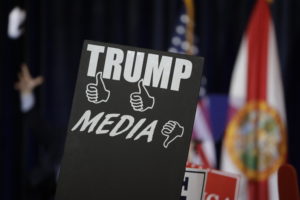
Supporters gather to rally with Republican presidential nominee Donald Trump at Minneapolis-Saint Paul International Airport two days before the election
It’s not news that a substantial segment of the American population despises the news media.
We’ve heard allegations of elitism and bias since our industry’s infancy, though recently donned t-shirts advocating our lynching are among the most disturbing displays of hatred toward journalists in the U.S. that I’ve seen in my lifetime.
When we had one or two news outlets in each community and a single platform, we didn’t pay much attention to it. We didn’t have to. We controlled the information and ability to communicate it. We carried on in our insular worlds, ignoring, over time, large swaths of populations we profess to protect. Our paychecks and our nation’s democracy remained relatively healthy. We didn’t seem to believe the criticism, or care.
The morning after the election in newsrooms across the country, that changed.
While we are not the Democrats the public rebuked on Election Day, that’s how they see us. And they are done with us, too, they said. They don’t trust us, they don’t like us and—perhaps most importantly—they don’t need us. And never has that been more true than it is now.
Bias, both actual (which plenty of data support) as well as perceived, is pummeling us and jeopardizes the stability of our democracy.
So what do we do?
Consider “bipartisan” collaboration on stories. Reporters from competing (and non-competing) news organizations are teaming up more than ever and producing some of our country’s best journalism. This sounds radical when imagining reporters from The New York Times and Breitbart, for example, working together, but if we could really dig deep and bury our egos, we can learn from each other and at the same time produce stronger material that resonates across a far greater spectrum.
If you’re thinking you have nothing to learn from reporters who work elsewhere—whether it’s a rural newspaper in Arkansas or one of the newer digital start-ups—you are definitely part of the problem.
This relationship building can start at any of the various journalism conferences or even by reaching out to a local reporter next time we’re working on stories that have anything to do with their communities. Let’s start by dropping the biases we have against each other.
Contemplate incorporating a “bias editor” or some similar position into daily journalism. Many of our newsrooms are filled with people who think alike. This is a problem. We overlook snarky headlines and loaded language. While, of course, this task used to be inherent in our editors’ jobs, we are failing.
We’ve used public editors and ombudsmen as liaisons with readers typically only after they’re upset. Perhaps we could be more proactive—not pandering—but just more thoughtful. Like any good scientist, the editor could consider the null hypothesis of the story and use algorithms (which already exist) to help detect bias, seek for prejudices in photo choice and placement, and use of sources, for example.
It’s a tall order. No doubt. But when you consider what is truly at stake, what options do we have?



